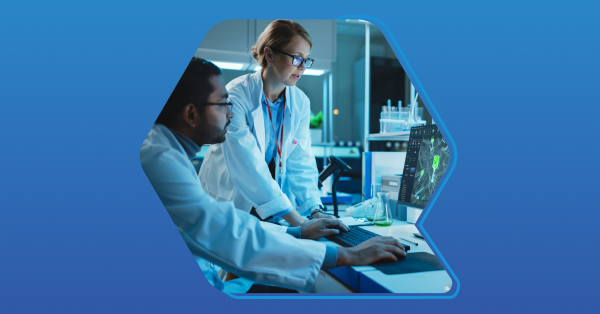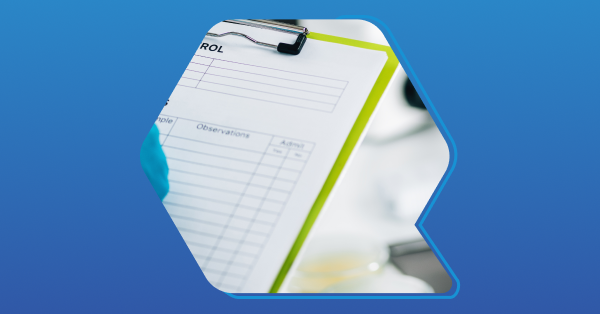6 Ways A LIMS Can Make Your Lab More Efficient


There is no shortage of tasks for a lab on any given day: time-sensitive test turnarounds, inventory management, report generation & sign-off, ensuring regulatory compliance, and a host of other tasks. If you do not have a system to help manage these tasks, things can quickly get out of hand.
And that means errors, double work, and the risk of non-compliance.
While some labs might rely on pen and paper to keep track of everything, a LIMS (Laboratory Information Management System) can dramatically improve your lab’s efficiency and effectiveness. A LIMS is far superior to pen and paper or other manual methods, so in this article, we’ll explore the top six ways a LIMS can improve your lab’s efficiency.
What is a LIMS?
A Laboratory Information Management System (LIMS) is a comprehensive software platform tailored to the demands of modern labs. When it comes to streamlining and automating your lab, a LIMS will be your greatest asset. A LIMS can help with:
- Sample and test management
- Reporting
- Inventory management
- Invoicing and billing
- A Customer Portal to allow for customer self-service of testing requests, billing information, and reports
- Quality assurance and quality control
- Integrations between instruments
- Integrations between other critical systems (e.g. Billing)
- Business Intelligence
We’ll touch on how each of these can make your lab efficient. For now, here’s a quick rundown on the best use cases for a LIMS:
- Sample tracking and management: A good LIMS is an excellent asset for efficiently managing high volumes of samples from receipt to reporting.
- Workflow automation: Look for a LIMS with automation features that allow you to streamline and ensure data integrity.
- Data integration and reporting: A LIMS can provide centralized storage and easy access to laboratory data, enabling quick report generation and historical data retrieval.
- Instrument integration: For a lab with many types of instruments, a LIMS can be invaluable for seamlessly connecting them while automating data capture.
- Compliance and documentation: While not every LIMS can support quality management and compliance, some (like QBench) provide out-of-the-box features to help labs meet regulatory requirements.
When it comes to all-encompassing management tools, a LIMS often stands out as the gold standard to keep your lab running at peak performance.
What are the Advantages of Using a LIMS in a Lab?
Beyond efficiency gains, a LIMS is a clear winner for labs looking for a robust and secure way to manage their data and processes at scale.
Here are the main advantages of using a cloud-based LIMS in your lab:
- Accessibility anytime, anywhere: With cloud-based LIMS, lab personnel can access data and workflows from anywhere, provided they have an internet connection. In the ever-increasing popularity of remote work, this ensures uninterrupted data access even when away from the lab.
- Scalability on demand: As labs grow or their needs change, cloud-based LIMS (like QBench) can easily scale up or down and adapt to support your processes.
- Enhanced data security: Hosting on-prem software comes with additional costs to secure and maintain your systems. Cloud-based providers (like QBench) invest heavily in security measures, offering encryption, firewalls, and regular backups. This ensures that lab data remains secure and data recovery is swift in the event of local disasters or mishaps.
- Seamless updates and upgrades: Cloud LIMS solutions often come with automatic software updates, ensuring labs always have access to the latest features and security patches without needing manual installations or prolonged downtime.
Let's look at the ways a LIMS can help streamline and automate your lab.

6 Ways a LIMS Can Make Your Lab More Efficient
The strength of a LIMS lies in its ability to help labs get more done. While there are many ways a LIMS can help your lab be more efficient, the top six benefits we’d call out are:
- Centralize data capture
- Digitize and streamline sample management
- Automate processes
- Generate reports
- Manage compliance
- Streamline billing and invoicing
Centralize Data Capture
A significant strength of a LIMS is its ability to seamlessly integrate other instruments in your lab, centralizing data capture and storage.
This ensures that all data is easily accessible from a single platform. This reduces human error while also allowing data to be accessible to members of your team anywhere they are – something especially important as distributed teams become more common. When shopping for a LIMS, make sure to look for one with robust integration support.
Digitize Sample Management
We mentioned above that a LIMS can be used to digitize and keep track of samples. Not only does this help modernize your lab, but it also provides a sizable efficiency boost.
By digitizing this process, labs can swiftly log, retrieve, and manage the lifecycle of each sample. This eliminates the errors that come with manual recording, ensuring that samples aren't lost or mislabeled, which can be a costly mistake.

Automate Processes
Digitizing samples and data is a major benefit, but it pales in comparison to the efficiency boost your lab can get from automation. Here’s a sample of the things a LIMS can help you automate:
- Integrate systems and tools
- Automate lab workflows and processes
- Generate automated reports
- Automate calculations
Automation can be extremely powerful in eliminating repetitive tasks while reducing the risk of errors. Automation on its own is not enough, though. We recommend looking for a LIMS that is configurable (rather than customizable, which often requires custom code to set up).
A “no code” solution means your lab can adjust automations on the fly as your lab changes rather than hit a bottleneck that only a developer can solve.
Generate Reports
Whether you are generating reports for a customer or internally, the ability to create complex data visualizations can be a time-consuming task. Many LIMS offer advanced analytical tools and data filtering to help labs generate and save reports.
Whether tracking turnaround times, monitoring usage of resources, or identifying bottlenecks, these analytics can be extremely valuable and simple to create with the right LIMS.

Manage Compliance
Compliance and quality control are critical in a lab. Fortunately, a LIMS can help you here as well.
A LIMS allows for real-time monitoring and control over various processes, ensuring that standards are met at each step. When anomalies or deviations are detected, alerts can be triggered, allowing immediate corrective action. QBench LIMS comes with an integrated QMS so all your lab management and compliance features are tightly connected in one platform.
For labs regulated under the FDA's 21 CFR Part 11 framework, please take a look at the in-depth guide here.
Streamline Billing and Invoicing
On the operations side of things, a LIMS can help with billing and invoicing as well. QBench LIMS can save your team thousands of hours each year by helping you:
- Streamline your accounting by auto-generating invoices
- Customize invoice templates to match your branding
- Create Quotes, volume-based discounts, panel pricing, rush order pricing, and customer-specific pricing
- See paid and reconciled Invoices
- Visualize Quotes and Invoices on a Customer Portal for self-service
Choosing a LIMS with billing support ensures accurate invoicing, reduces the potential for human error, and speeds up the billing cycle. Labs can thus ensure their financial operations are as efficient as their scientific processes, ultimately improving cash flow and customer satisfaction.
By investing in a LIMS (like QBench), your lab can make substantial strides in efficiency, reducing manual work and errors so you can focus on getting more done.
Make Sure You Choose the Right LIMS for Your Lab, Download the Free Guide
A LIMS can drastically improve the efficiency of your lab, but only if you choose the right LIMS.
A good LIMS will scale with you, adapt to your processes, streamline workflows, help your lab remain compliant, and connect your many instruments. Not every LIMS can provide this type of support while remaining quick to implement and easy to use.
That’s why we pulled our findings from working with hundreds of labs across industries in our guide to choosing the right LIMS for your lab. We included a free download as well to have on hand during your search.








